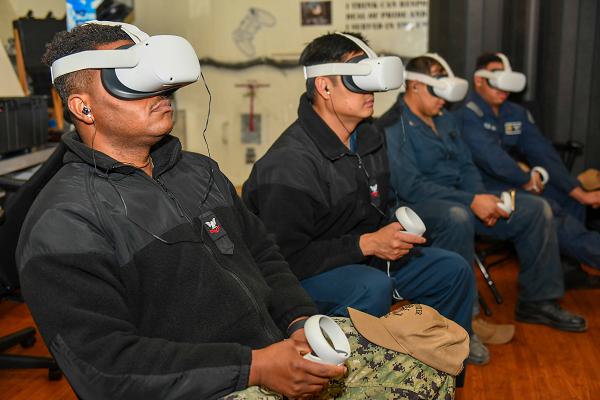
Naval Base San Diego, California. (January 29, 2024): Suicide among America’s military servicemembers is a recurring tragedy our nation has battled for years. Now, the armed forces have added a new tool, virtual reality, to the fight. In this photo by Seaman Tyler Miles, Sailors assigned to the amphibious assault ship USS Boxer are participating in a suicide prevention training pilot program using the latest virtual reality (VR) technology. This experimental effort, conducted at the Afloat Training Group, will use VR to train servicemembers on how to manage difficult mental health conversations. This new tool couldn’t come at a better time.’
Last year, the Army had the highest increase in suicides followed by the Marines with the Air Force experiencing only a slight uptick. The sad fact is many of these tragedies might be avoided if a fellow servicemember intervenes. The military is determined to equip servicemembers with the conversational tools they can use if they find themselves involved in these extremely challenging encounters.
Currently, the service branches teach suicide prevention in lecture-style courses that often lack practical application; “What can I do or say in these situations?” The VR experience allows students, overseen by coaches, to interact directly with fellow servicemembers in crisis under a variety of virtual scenarios. Participants are equipped with VR headgear in a one-on-one intervention with someone who is struggling with thoughts of suicide and are given prompts to help guide the discussion. Questions may range from “Are you thinking about hurting yourself” to “Do you have a gun in the house” and every encounter looks and feels like the real thing.
The 30-minute program forces participants to think very carefully about what to do, and not do, when intervening in a suicide situation. The goal is to “talk them down,” find out what is wrong, and then guide them to a safe resolution. If a participant fails to ask the distressed person the correct questions, a coach intervenes and the role play begins again.
The military hopes this new, more immersive tool can give servicemembers the confidence to successfully intervene at these critical moments to prevent this tragic loss of life.


